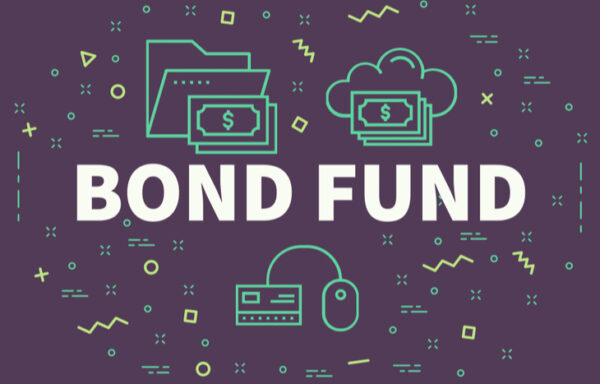What are Bond Futures?
Future contracts are derivatives that allow the contract holder to buy securities at a certain price, at a certain point in the future. And investors can write or buy future contracts for just about any marketable security. However, bond futures are far and away the most popular type of future contracts. The reason? They’re governed by interest rates, which have rippling ramifications for every other financial market around the globe.
Whether you’re protecting your bond-heavy portfolio against interest rate risk or trying to cash in on market signals before a rate change, bond futures are the way to do it. Investors typically write or buy futures contracts on 2-, 5-, 10- and 30-year treasuries. Moreover, each offers varying potential for risk mitigation and return on investment.
To understand the value of bond futures, and how to leverage them correctly, here’s a closer look at how they work.

Bond Contract Specifications and Prices
In simplest terms, a futures contract is an agreement between two parties to transact securities at some time in the future—bonds, in this case. The investor who writes the contract lays out the terms. Furthermore, the contract buyer pays a premium to secure the rights to those terms. For example, here’s what the specifications for a bond contract typically include:
- Contract Months (duration and due date)
- Contract Size (number of securities)
- Deliverable Grades (type/quality of bond)
- Price Quote (price for securities)
- Tick Size (minimum price fluctuation)
Writing a contract is a debit action. However, buying a contract is a credit action. Ultimately, the seller of the futures contract is obligated to deliver bonds to the buyer in agreement with the contract specifications.
The contract price for a bond future has a direct, inverse relationship to the interest rate of the bond. The higher the interest rate, the lower the price of the future contract and vice-versa.
Institutional Bond Futures
The biggest purveyors of bond futures are institutional investors. In fact, this includes banks and insurance companies. These institutions have a vested interest in the bond market. Specifically, interest rates that affect the products they sell, like investment securities or insurance policies. Bond futures allow them to hedge against volatility that may affect the market and their cost of doing business.
As mentioned, the bond futures market is prolific and liquid. Not only are U.S. Treasuries actively traded every day, there’s a continuous influx of futures contracts to accompany them. This provides institutional investors the opportunity to adapt in changing rate environments. As a result, investors can better-protect large bond portfolios.
The Benefits of Futures
Derivative markets differ from securities markets in that no product changes hands—only contracts. As a result, there’s constant activity from hedgers, speculators, margin traders and arbitrageurs that continues to proliferate the number of contracts and transactions. All this adds up to some very specific benefits for those seeking to dabble in bond futures.
- Bond futures trade around the clock and are highly liquid, which makes them useful for adapting to changing global interest rates in real-time.
- Like any derivative product, bond futures allow investors to leverage a significant investment with a small amount of capital, enabling significant returns.
- The sheer volume of contracts allows speculators to identify options that fit their exact hypothesis.
Ultimately, the benefits of bond futures boil down to agile opportunities to adapt to changing interest rates, which have the potential to affect a variety of investment markets. Savvy investors who can move fast to secure the right futures contract can hedge their own bond portfolio and even profit handsomely from speculation.
The Drawbacks of Futures
Like any derivative product, there’s a high level of risk inherent to bond futures because they’re speculative. No one can anticipate future prices and rates. Speculators on both sides of the transaction take on some level of risk—either losing the contract premium or delivering bonds at a higher price than market value. There are additional risks, as well.
- Derivative products trade on margin, which leaves investors vulnerable to the inverse effects of leverage. Speculation gone wrong can result in significant losses.
- The unique quotation practices, delivery policies and expiration cycles of U.S. Treasuries can be confusing to those who don’t understand the underlying bond market.
- Because bond futures are so prolific, the market can often move faster than investors. Those without access to sophisticated quote and trade systems can quickly fall behind.
While the stability of the broader bond market and the high-profile nature of interest rates do a lot to mitigate volatility, bond futures are nonetheless speculative. This makes them best for hedging and arbitrage.
How to Leverage Bond Futures
There’s a reason the futures market for bonds is among the most prolific of any of the financial markets. Interest rates have rippling effects across the world, which makes them among the most important economic indicators for everything from lending and borrowing to currency exchange.
Investors are constantly clamoring to get ahead of any impending rate changes and bond futures are the best way to do it. And while it’s often speculative, that speculation can serve as a hedge or a route to profit.
While bond futures are more common among institutional traders, retail investors can also participate in this highly liquid, potentially profitable market using margin accounts. It’s important to keep in mind that, in contrast to the broader bond market, the market for bond futures is fast-paced, volatile and aggressive.





